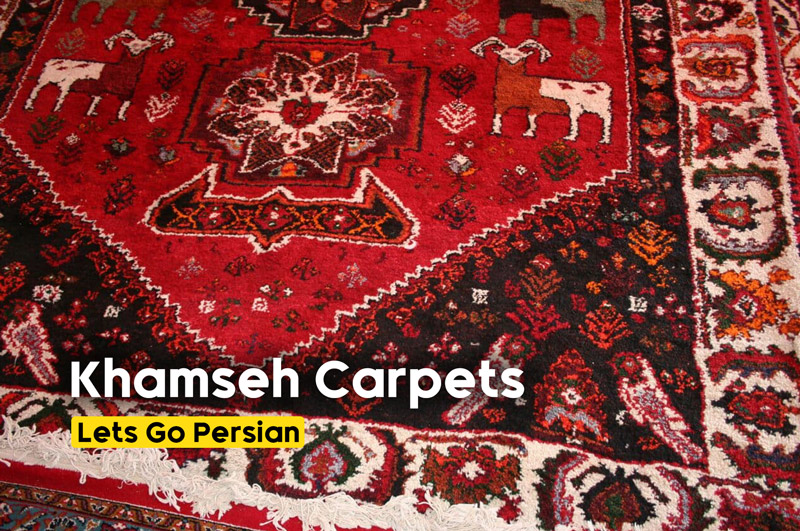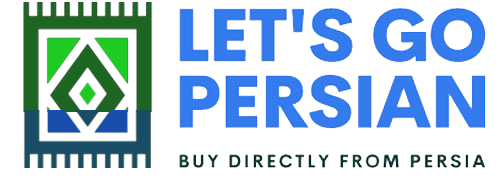
Critical Points in Carpet Weaving

The Role of Myths in Iranian Handwoven Carpets
Unveiling the Carpet Treasures of Inanlu and Bharlu Clans in Fars Province
We look at the role of the Inanlu and Bharlu clans in the Persian nomadic handlooms. Before that, we want to know what you know about Ilat ( Clans ) Khamseh of Fars province. Five famous families excel in weaving beautiful handwoven in this province.
The five tribes of Baharlu, Inanlu, Nafar, Basri, and Arabs have close cultural relations due to their neighborhood, and this closeness can be seen in some carpet patterns. Still, it must be said that each of the tribes has unique designs and coloring, and They have followed their style to some extent. Therefore, it must be noted that the Khamseh weaving method or the Khamseh carpet pattern is incorrect.
The Baharlu and Inanlu clans have Turkish roots in Central Asia, and before migrating to Fars, they were among the soldiers of Qazalbash Shah Abbas Safavi. These clans are close to each other regarding culture, race and roots. To the extent that sometimes it is not easy to distinguish which tribe the carpet obtained from them belongs to.

Among the 20 clans of the Baharlu tribe, the Asdbeigi clan, followed by the Jameh-e-Bozorgi and Ahmadlu clans, are famous. Of course, as mentioned, the carpet weaving traditions of the Inanlu and Bharlu clans are similar, but the presence of some motifs makes these two styles slightly different.
Sirus Parham, a renowned researcher and carpet expert in the country, praises the carpet weaving of these two clans and the role of the Inanlu and Bharlu clans in the Persian nomadic handwoven in his book: ” The Bharlu clan ranks second in importance and ranking after the Qashqai clan. More precisely, regarding the variety and richness of patterning and coloring, the premium Bharlu carpets come to a short distance after Igdar, Kashkuli and Boli carpets.
The weaving method and style of design and painting of Baharlo and Inanlo carpets have many standard features and are very close. The handwoven knots of both clans are woven with a symmetrical knot; the double wefts are almost always burnt red, the threads are more or less continuous brown, and the weft is always made of wool.
Patterning and coloring of Bharlo and Inanlo handwoven
The primary thought and imagination of designing and mapping and to the extent of the dyeing and coloring style of Baharlu and Inanlu are more or less from the same school, and the motifs and pictures are from the same treasury. It surprises the abundance of bird pictures and pictures that take root from the pomegranate tree and its fruit and various idol motifs that have been used for centuries on all of them. The fascination and attachment of the traditional weavers of Bharlo to the role of animals is unique, both in Fars and other areas of nomadic and rural weaving.
Apart from the traditional chickens and birds, abstract birds such as parrots and chickens, which cannot be found in any of the Persian handlooms, have found their way into Baharlu handlooms, and it is rare to find the handlooms of this tribe. That there is no animal in its corners.
 ( Khamseh Carpet )
( Khamseh Carpet )
It’s enough that most carpets made entirely of chicken are from the Baharlu tribe. Because even the carpet weavers of Persian Arabs, with all their love for various birds, have left behind only a handful of carpets made entirely of chicken.
The zoology of the Inanlu, like the Baharlu, the Basri, the Arabs of Fars, and the weavers of Bawanat, Qonghori, Neyriz, and Darab, relies on abstract birds and the abundance of poultry. With this apparent difference, Inanlu weavers use a lot of horned deer in their carpets, which has no place in Baharlu and Basri carpet weaving.
The Bharlo and Inanlo school of painting and role-playing is based on the same pillars that have kept the grand edifice of Persian carpet weaving art and craft at its peak for centuries.
It is not believed that the women of these two clans had anything from the treasure trove of Central Asian Turkmen paintings and drawings, except for two more or less “Turkish Signs,” if they did, it was forgotten a long time ago.
Carpet and needlework
Baharlu and Inanlu are the only nomadic tribes of Fars that have not benefited from Kilim weaving and needle weaving. The only justification why these two tribes have not benefited from this art among the nomadic tribes of Fars province is that their art was lost after they settled in the late 13th lunar century or that their handwoven rugs do not have a distinct and distinguished feature. Its quantity is small, and it has been mistaken for similar handwoven of other clans.



















